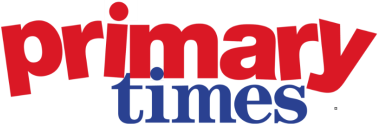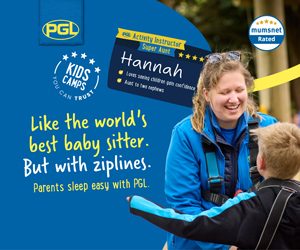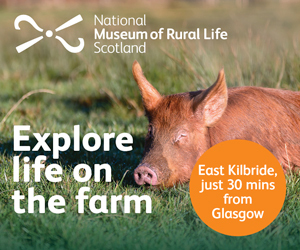Primary Times - the definitive what’s on and where to go family guide of activities and events for children of primary school age. Things to do with your kids during the school holidays including arts and craft activities, music and theatre for children, parties, competitions, days out, and family attractions along with term time drama schools, dance classes, after school clubs and sports activities. Things to do at a place near you!
Read for My School Challenge
 CLASSIC CHILDREN’S BOOKS, WRITTEN IN THE 1800s, CHOSEN BY SCHOOLCHILDREN IN NATIONAL READING COMPETITION
CLASSIC CHILDREN’S BOOKS, WRITTEN IN THE 1800s, CHOSEN BY SCHOOLCHILDREN IN NATIONAL READING COMPETITION
Classic children’s books written more than 100 years ago can still spark the imagination of the modern generation of schoolchildren, an analysis of the titles chosen in a national reading competition has revealed.
More than 3,600 schools took part in this year’s Read For My School challenge, run by Pearson, the world’s leading learning company, and Booktrust, the reading charity, with the support of the Department of Education.
Some 212,000 pupils in primary and secondary schools across England participated in the competition which challenges pupils to read as many books as they can in two months, choosing from hundreds of print and online books that can be accessed at home as well as in class. In total, they read a staggering total of 876,000 books.
While many of the most popular texts chosen by pupils this year were contemporary novels and non-fiction, some old favourites, written more than 100 years ago, featured strongly.
Lewis Carroll’s fantasy Alice’s Adventures in Wonderland, first published in 1865, was ranked in the top 20 of the most read books, selected by more than 6,000 pupils this year.
The book features some of the most iconic characters in children’s fiction, such as the White Rabbit, the Queen of Hearts and the Cheshire Cat, and has inspired numerous film adaptations, most recently starring Johnny Depp as the Mad Hatter and Anne Hathaway as the White Queen.
Black Beauty, Anna Sewell’s classic about the adventures of a handsome black horse, born on a farm but put to work pulling cabs in London, was published in 1877. It was chosen by more than 4,000 book worms, taking 30th position in the top 100 table.
The book, which became an immediate best-seller when it was first released, teaches how to treat people with kindness, sympathy, and respect and was a forerunner in the pony book genre of children's literature.
Even the book taking the top spot in the table of most popular titles is based on a classic fairy tale. Cinderella: The Real Story, by Jan Burchett and Sara Vogler, gives the original story a modern twist and was read by just over 16,500 children.
Proving the enduring popularity of children’s author Roald Dahl’s, The Fantastic Mr Fox, published in 1970, takes fourth position in the table. Some 12,000 children selected the title.
Peter Hughes, director of corporate responsibility at Pearson, said: "Brilliant new children's literature is being produced all the time but many classic books still have an enthusiastic audience. These books transcend the generations with their bold adventures and big themes. They transport children into different worlds.
"As well as the huge enjoyment pupils derive from the stories, many classics also introduce children to new words, enriching their language, and help them to progress in school."
Daisy Casemore, aged 11 and a Year 6 pupil in a South London school, took part in the Read for My School competition earlier this year. She said: “I liked that I could choose from different categories in the Read for My School online library. I loved the humour category as the books made me laugh a lot. I also liked reading Cinderella: The Real Story. This was one of my favourites as it gave a different twist to the normal Cinderella story. All the characters were the opposite to the classic tale and it was cleverly written and I loved it.”
The Read for My School competition is open to school children across England in Years 3, 4, 5, and 6 in primary schools and to Years 7 and 8 in secondary schools.
Children can access Read for My School’s free online library of more than 150 books on a computer, but also, for the first time in next year’s competition, on tablets and other mobile devices, giving children multiple ways to enjoy a great read.
Registration for next year’s competition is now open to schools and teachers at www.readformyschool.co.uk The target is for one million books to be read by pupils between January and March 2015, with Read for My School Reading Culture awards and prizes worth at least £1,000 on offer to winning schools.
Pupils are challenged to read as many books as they can from eight categories. Children log what they read on the website, receiving virtual rewards and being entered for weekly prize draws.
For the last two years, the most popular genre has been humour. The 876,000 books read by pupils this year were split by category as follows:
1. Humour: 27%
2. Real Life: 18%
3. Animals and The Wild: 13%
4. Adventure: 11%
5. Science Fiction and Fantasy: 11%
6. Mystery and Horror: 10%
7. Film and TV: 5%
8. Historical Fiction: 5%
International bestselling children’s author Jeremy Strong, who has published over 30 humorous books including My Brother’s Famous Bottom and The Hundred-Mile-An-Hour Dog, said: “Adding a sense of fun to stories is one of the best ways to turn a child into a reader and gain a love of reading. Funny stories are hugely effective in creating life-long readers.”
Teachers’ viewpoint:
Teachers who entered their schools this year said the competition transformed pupils into voracious book worms, spurred on by the prospect of reading more books than their classmates and winning prizes for their school.
Teachers credited Read for My School with boosting pupils’ desire to read, with 80% stating that having the option to read books online motivated their pupils to read more.
As in 2013, they reported that boys with average and lower reading ability were the groups whose interest was most sparked. Across the whole competition, 56% of all books logged were read online.
Jackie May, deputy head teacher and literacy co-ordinator at the Lordship Lane Primary School, in north London, which was the Best Read School in the competition earlier this year, said the level of enthusiasm it generated “took her breath away”.
“A child who reads for pleasure, is easy to spot in a classroom. They are the children who are excited by reading, who feel or learn something when they read and want to talk about whatever they have read, fiction or non-fiction, books or magazines. This pleasure or 'point' to reading will have a direct correlation on how well they do at school and later on in their lives. That’s why it’s important that both schools and parents encourage reading for pleasure.”
Reading for pleasure has been shown to have a significant impact on educational attainment. Recent research, published by the Institute of Education, London1, found that children who read on a regular basis made more progress in maths, vocabulary and spelling between the ages of 10 and 16 than those who rarely read.
Teachers can register to take part in the competition from November by logging on to http://www.readformyschool.co.uk On registering, they will be able to set up educator and pupil accounts as well as accessing a range of teacher support resources to prepare and plan for the competition well in advance. Schools, teachers and parents can also follow Read for My School on Twitter @ReadforMySchool.





